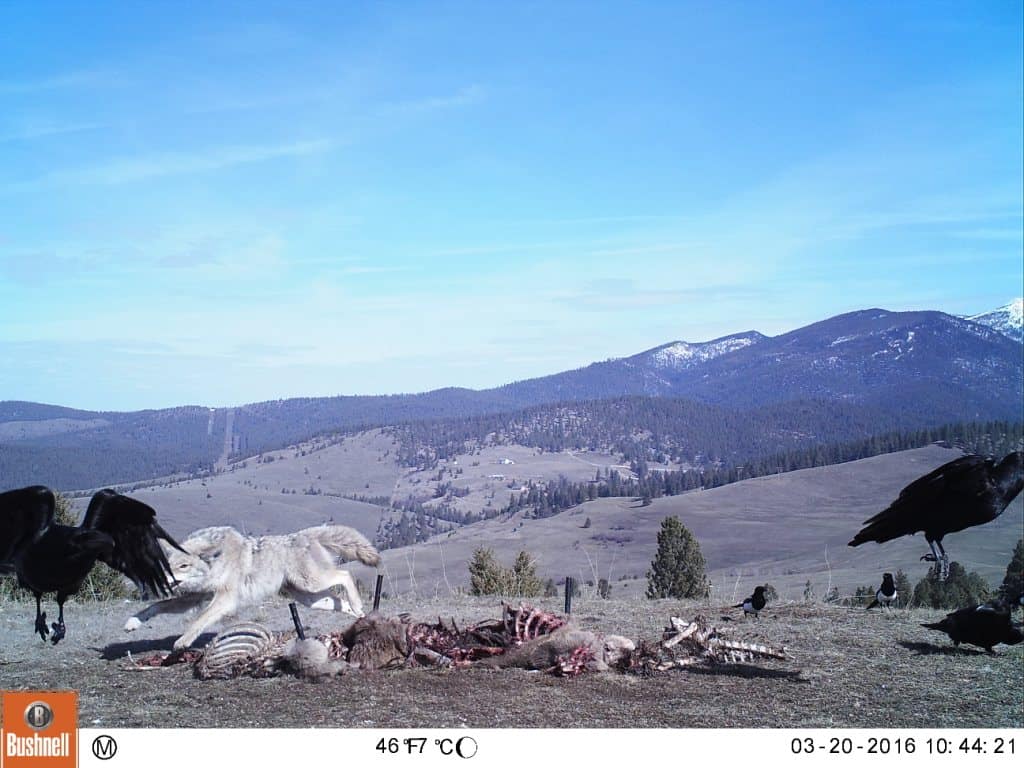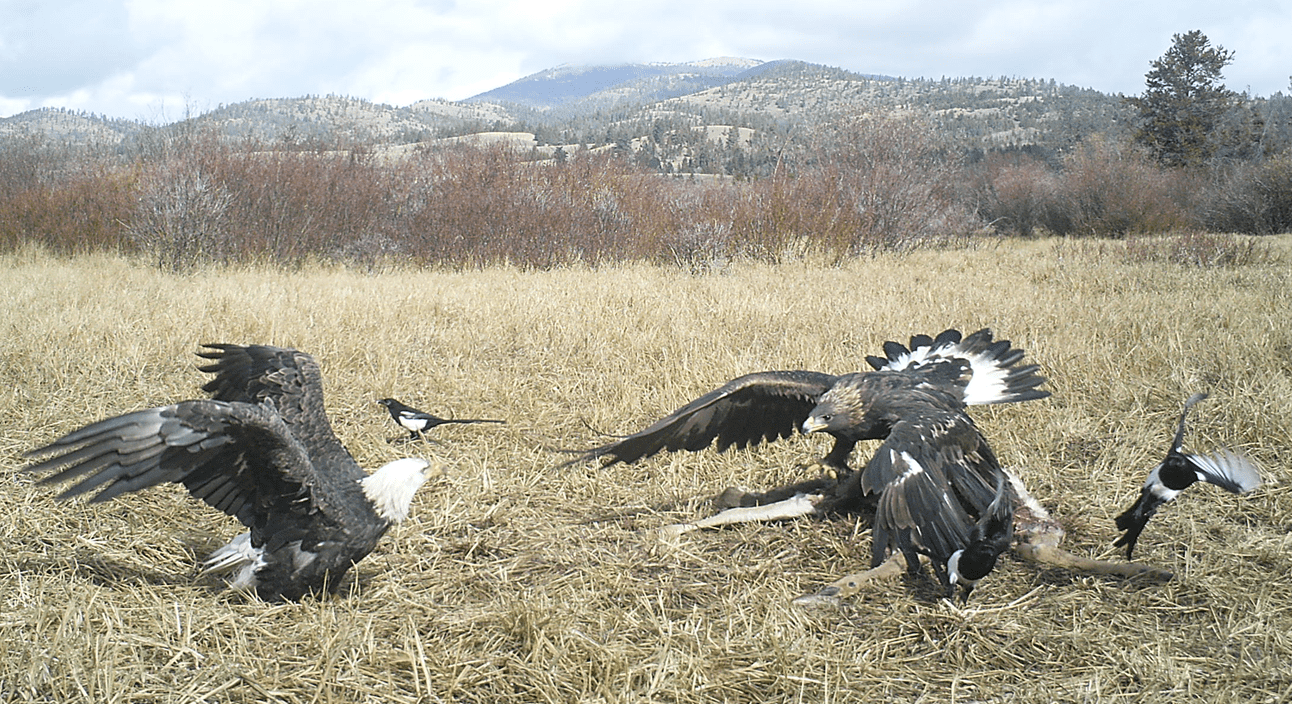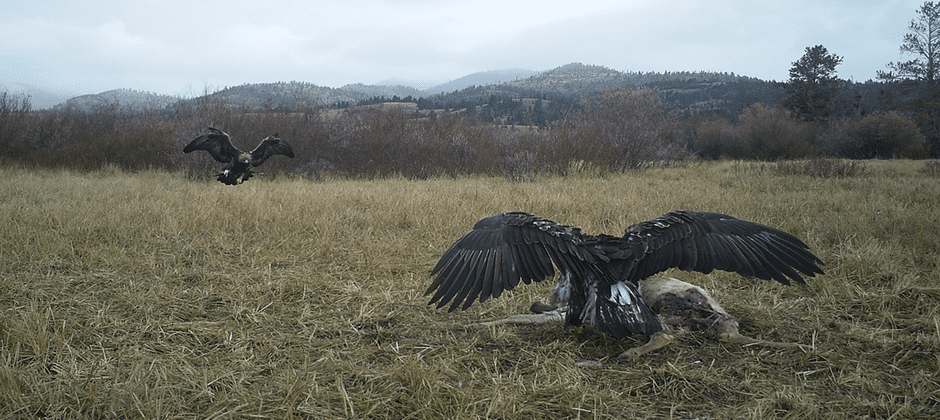Share this article
JWM: Nonmigratory eagles suffer ‘troubling’ lead exposure
Golden eagles that spend their winters in western Montana are overwhelmingly exposed to lead contamination.
“Almost the entire population has been exposed to lead,” said Robert Domenech, executive director of the Raptor View Research Institute and the lead author of a study published recently in the Journal of Wildlife Management.
Domenech had long known that lead exposure was a major obstacle for the conservation of California condors (Gymnogyps californianus). Golden eagles (Aquila chrysaetos) also rely partly on scavenging, which can often put them into contact with carcasses of wildlife that had been killed by lead ammunition. Starting in 2006, he and his collaborators set out to examine how lead might impact golden eagles.

A wolf (Canis lupus) chases common ravens ( Corvus corax) from a carcass. Credit: Raptor View Research Institute
They initially sampled the blood of migratory eagles that traveled along the Rocky Mountains. Blood samples of 150 birds revealed that nearly 60% had elevated lead levels, according to a study published in 2015.
But nonmigratory eagles also spent their winters in Montana. The team suspected they might be more exposed to lead than the traveling raptors due in part to the fact that the raptors rely almost solely on scavenging during the winter months. That would expose them to higher rates of lead than capturing living prey.

A juvenile golden eagles faces off against an adult bald eagle (Haliaeetus leucocephalus).
Credit: Raptor View Research Institute
Domenech and his co-authors gathered blood samples from 91 nonmigratory golden eagles in Bitterroot Valley in western Montana from 2011 to 2018. They discovered a staggering 94.5% of nonmigratory eagles suffered from lead exposure in their samples.
“It’s a shocking discovery, really, Domenech said. “We never expected those kinds of numbers.”
Lead exposure can directly lead to birds’ deaths — it can cause kidney failure, motor skill reduction that makes it harder for eagles to hunt live prey, liver issues, digestive issues and reproduction issues.
On top of lethal impacts, more recent research has also revealed that California condors suffer from sublethal stress as well.

A photo showing how a lead bullet, on the right, fragments compared to a copper bullet (left). Scavengers, like eagles, can easily ingest these fragments. Credit: Mike McTee
“The effects of lead are more pervasive than we even know right now,” Domenech said, adding that lead combines with other problems as a co-morbidity.
But he thinks the problem is more easily fixed than some of the other conservation challenges golden eagles face like a reduced prey base, habitat destruction, vehicle collisions and death associated with industrial wind energy developments.
“There’s a lot of things working against these birds,” Domenech said. But the lead problem can be fixed by individuals making better choices about the ammunition they use. Bullets made of copper, for example, are less toxic, and also fragment less on impact than lead bullets. “All we have to do as hunters is switch to nonlead alloys.”
This article features research that was published in a TWS peer-reviewed journal. Individual online access to all TWS journal articles is a benefit of membership. Join TWS now to read the latest in wildlife research.
Header Image: A skirmish brews between golden eagles at a carcass. Credit: Raptor View Research Institute








